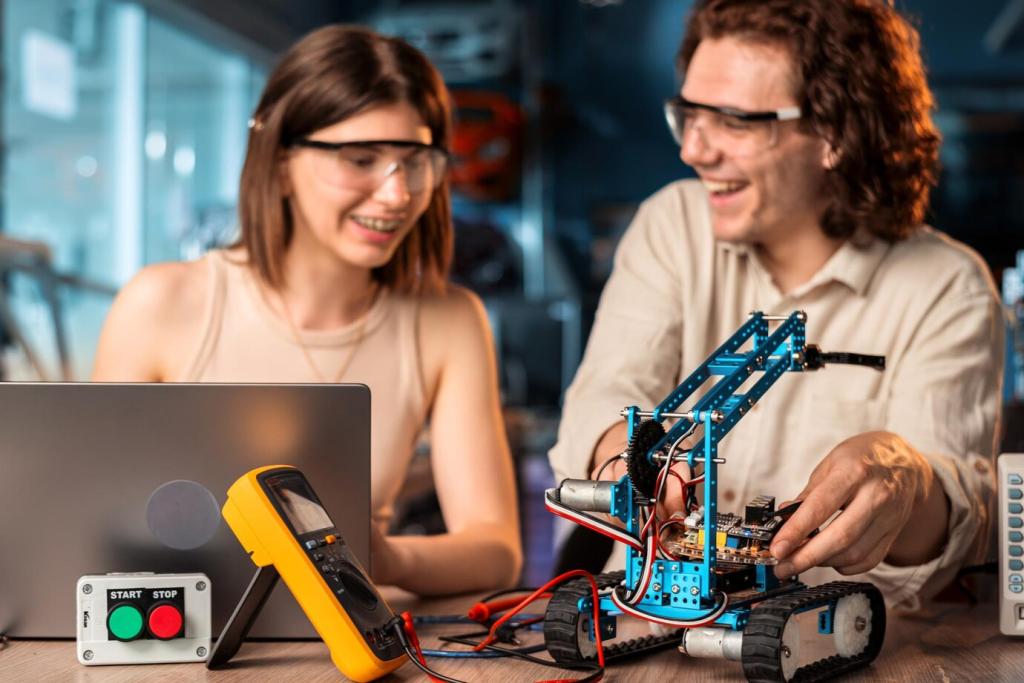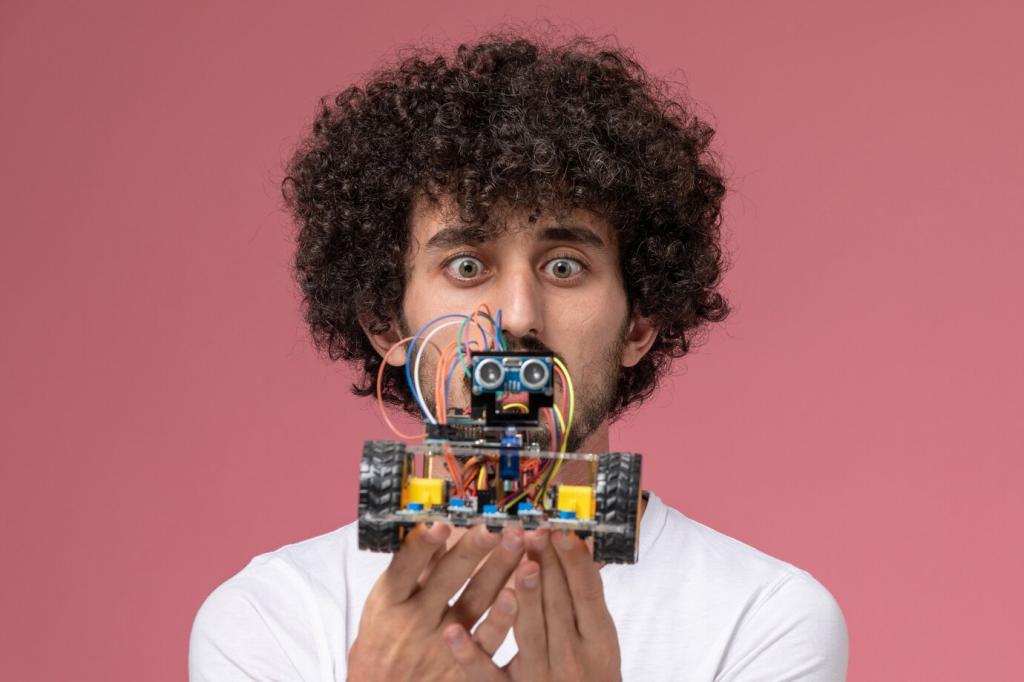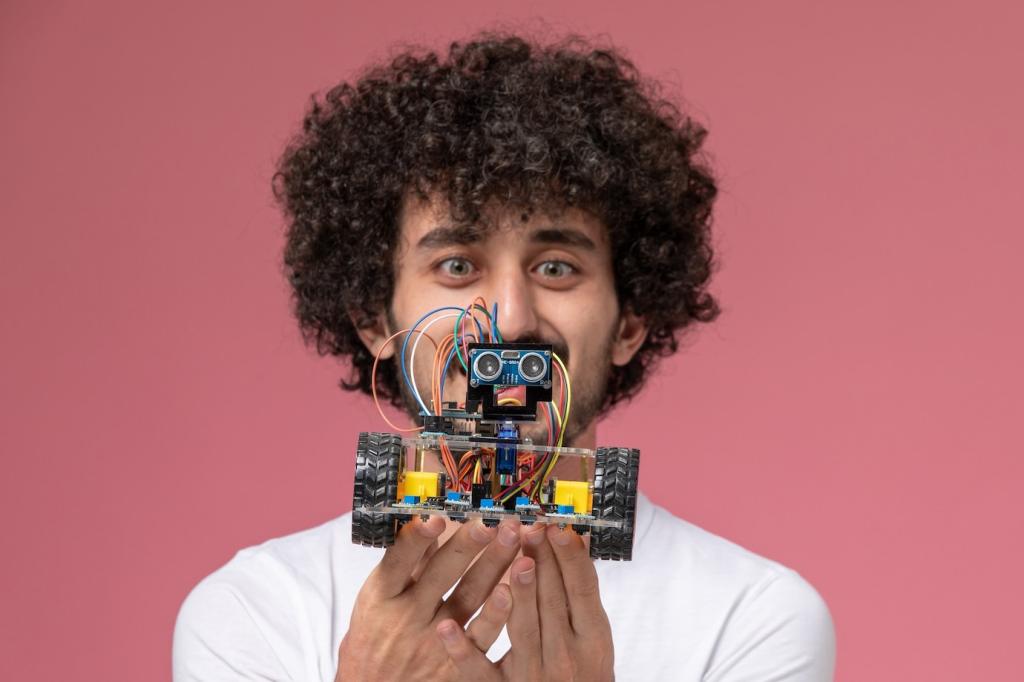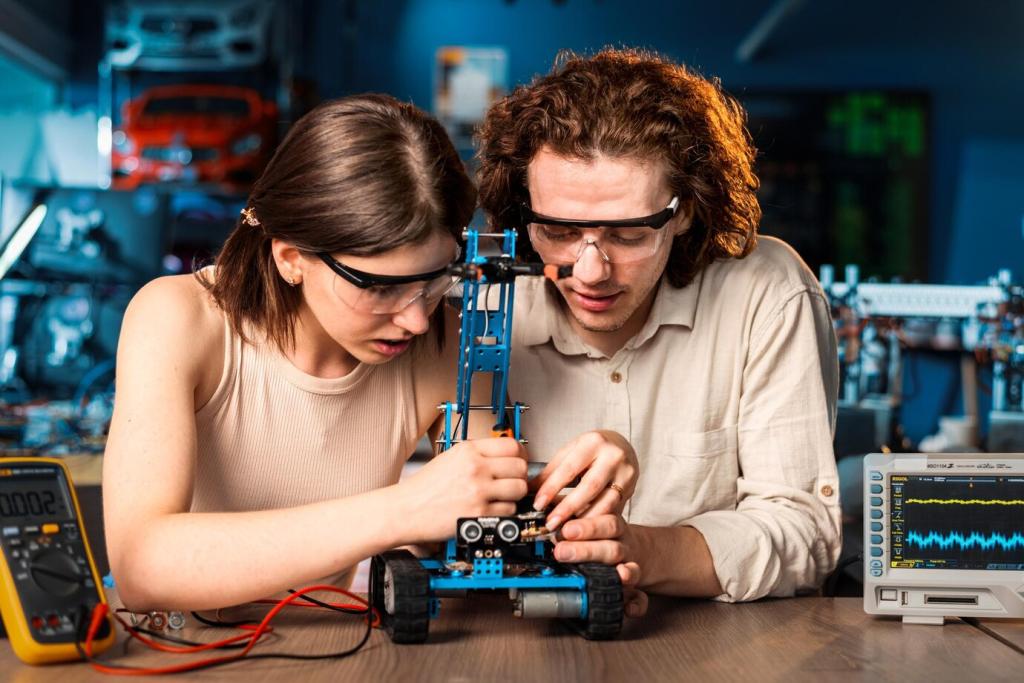
Spark Curiosity: Robotics and Hands-on Learning for Kids
Chosen theme: Robotics and Hands-on Learning for Kids. Welcome to a playful, practical hub where young minds tinker, build, and code. We weave stories, science, and step-by-step action into projects that transform curiosity into confident problem-solving. Join our community, share your builds, and subscribe for weekly kid-friendly robotics adventures.
Why Robotics and Hands-on Learning for Kids Matter
From Curiosity to Confidence
When children assemble simple robots, they see cause and effect in real time—motors spin, LEDs blink, and code changes behavior. Each small success builds confidence, while mistakes become clues, not failures. That mindset helps kids persist through challenges far beyond robotics and hands-on learning for kids.
The Power of Constructionism
Seymour Papert’s constructionism shows that children learn deeply by making tangible things. Robotics and hands-on learning for kids channel this theory beautifully, letting learners manipulate parts, debug code, and narrate how their creations work. Learning becomes a story they authored with wires, gears, and imagination.
Transferable Skills That Stick
Robotics and hands-on learning for kids nurture collaboration, planning, and systems thinking. Children practice breaking problems into smaller steps, testing hypotheses, and communicating results. Those habits transfer to writing, math, science, and art, creating well-rounded, resilient learners who delight in figuring things out.

Getting Started at Home: Simple, Joyful Robotics Projects
Toothbrush Bots with Big Personalities
Grab a toothbrush head, a small vibrating motor, a coin cell battery, and tape. Kids explore balance, friction, and motion by adjusting weight and bristles. Let them decorate with googly eyes and track distances. Robotics and hands-on learning for kids start delightfully messy and irresistibly fun.
Paper Circuits that Light the Way
Use copper tape, LEDs, and a battery to build greeting cards that glow. Children learn polarity, closed loops, and troubleshooting when a light fails. Robotics and hands-on learning for kids thrive when sparks of wonder illuminate scientific principles right under curious fingers.
Block-Based Coding Meets Real Motors
Pair a kid-friendly microcontroller with visual blocks to spin motors and play tones. Children map commands to physical effects, building intuition about sequencing, loops, and sensors. Robotics and hands-on learning for kids connects code to the tangible world, making logic feel alive and meaningful.
Classroom Strategies That Empower Every Young Roboticist
Plan–Build–Test–Reflect Cycles
Establish short, repeatable cycles where students sketch, assemble, test, and document changes. Reflection journals make thinking visible and normalize iteration. Robotics and hands-on learning for kids flourish when classrooms value progress over perfection and celebrate each thoughtful revision.
Roles that Keep Teams Moving
Assign rotating roles—Builder, Coder, Tester, Documentarian—so everyone contributes and learns broadly. Students gain empathy for different tasks and practice respectful collaboration. Robotics and hands-on learning for kids becomes a shared adventure, not a scramble for the same screwdriver.
Assess What Matters: Process and Growth
Evaluate planning, teamwork, troubleshooting, and clarity of explanations as much as final outcomes. Rubrics that highlight iteration and evidence-based reasoning reinforce real engineering habits. In robotics and hands-on learning for kids, growth is the goal and reflection is the secret engine.
Choosing Tools and Kits: Age-Appropriate, Budget-Savvy Picks
For ages 4–7, choose large, durable components, color-coded wires, and simple sensors. Magnetic connectors and picture guides reduce frustration while boosting independence. Robotics and hands-on learning for kids at this stage should emphasize playful discovery, storytelling, and quick victories that invite another try.
Ages 8–12 thrive with kits that scale—servo motors, distance sensors, and block-to-text coding bridges. Add-ons keep challenges fresh and skills growing. Robotics and hands-on learning for kids should feel like a ladder of doable steps, not a wall of technical jargon.
Reuse cardboard, bottle caps, and rubber bands for chassis and mechanisms. Salvage motors from old toys and power them with safe batteries and switches. Robotics and hands-on learning for kids shine when ingenuity replaces expensive parts with clever, eco-friendly solutions.

Real-World Connections: Robotics Around Us
From vacuum robots to warehouse sorters, children can spot automation at home and in stores. Invite questions: Who programmed it? How does it sense obstacles? Robotics and hands-on learning for kids turns errands into mini field trips filled with observation and wonder.
Real-World Connections: Robotics Around Us
Our local library unveiled a small elevator robot that ferries books between floors. Kids toured the control room, saw sensors in action, and asked brilliant questions. Robotics and hands-on learning for kids felt immediate, friendly, and magical—not distant technology behind closed doors.
Family and Community: Build Together, Grow Together
Set a regular weekend slot with snacks, music, and a simple goal—like a line-following robot race. Kids anticipate the ritual, and progress compounds naturally. Robotics and hands-on learning for kids becomes a warm family memory alongside sturdy engineering habits.

Safety, Sustainability, and Accessibility in Kid Robotics

Tool Safety Becomes a Superpower
Model goggles, tidy wires, and battery handling. Use clear zones for cutting and hot glue, with adult supervision policies posted visibly. Robotics and hands-on learning for kids builds trust when safety is predictable, practiced, and praised every single session.

Repair, Reuse, Reimagine
Teach kids to desolder responsibly, label spare parts, and document repairs. Upcycling broken toys into prototype parts reduces waste and costs. Robotics and hands-on learning for kids gains depth when sustainability becomes a core design constraint rather than an afterthought.

Design for Every Learner
Offer visual schedules, silent timers, and texture-friendly components. Provide captioned videos and step-by-step cards. Robotics and hands-on learning for kids should welcome neurodiverse makers and varied motor abilities with flexible pathways and tools that adapt to each child’s strengths.
